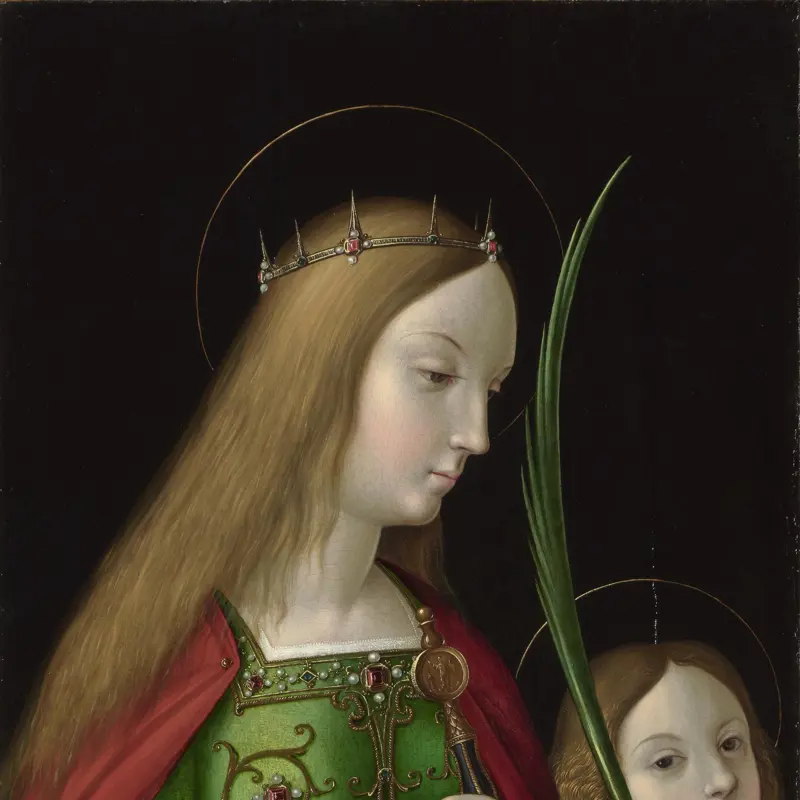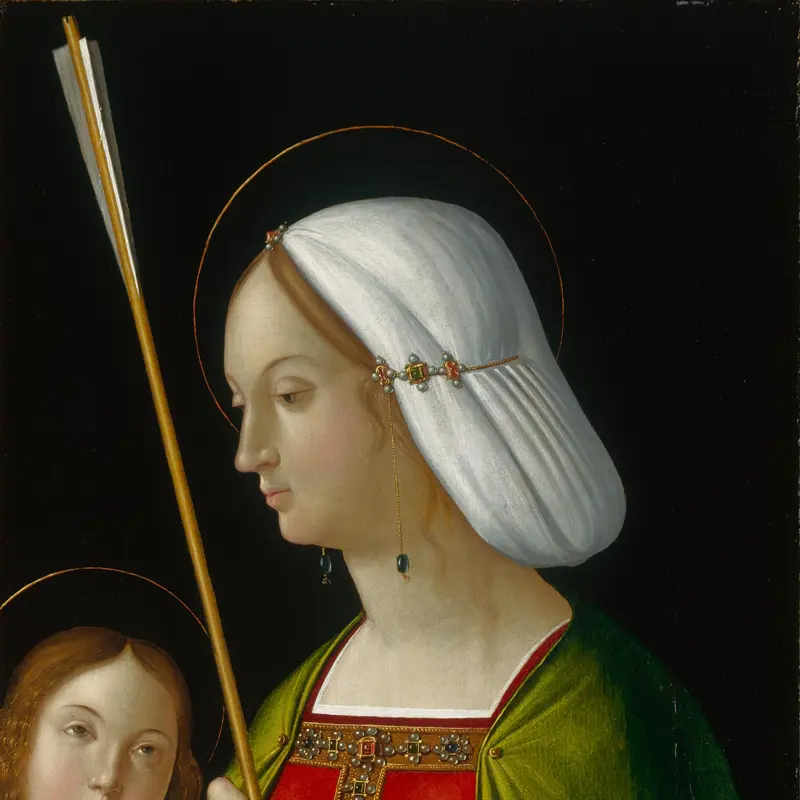Antonio de Solario, 'The Virgin and Child with Saint John', perhaps about 1500-10
About the work
Overview
Solario most probably trained as a painter in Venice, where he would have been aware of the works of Giovanni Bellini, the city’s most highly regarded painter. This picture shows the influence of Bellini’s images of the Virgin and Child that were made for private worship. The holy figures stand before a vast landscape with mountains, the most distant of which are clothed in haze, and the view is partially obscured by a hanging – all features that are found in Bellini’s paintings.
Christ stands on the stone parapet which separates us from the Virgin and Saint John the Baptist, Christ’s cousin. Even though he is an infant here, John is shown wearing the camel-skin tunic and holding the reed cross that refer to his time in the desert, when he prophesied about Christ’s ministry. Still children, the two boys play with a bird, which Christ holds on a string as John presents it with a dragonfly to eat.
Key facts
Details
- Full title
- The Virgin and Child with Saint John
- Artist
- Antonio de Solario
- Artist dates
- probably active 1502 - 1518
- Date made
- perhaps about 1500-10
- Medium and support
- oil, originally on wood, transferred to canvas
- Dimensions
- 36.5 × 29.8 cm
- Inscription summary
- Signed; Inscribed
- Acquisition credit
- Salting Bequest, 1910
- Inventory number
- NG2503
- Location
- Not on display
- Collection
- Main Collection
- Previous owners
Provenance
Additional information
Text extracted from the ‘Provenance’ section of the catalogue entry in Martin Davies, ‘National Gallery Catalogues: The Earlier Italian Schools’, London 1986 and supplemented by Anna McGee; for further information, see the full catalogue entry.
Bibliography
-
1986Davies, Martin, National Gallery Catalogues: The Earlier Italian Schools, revised edn, London 1986
-
2001
C. Baker and T. Henry, The National Gallery: Complete Illustrated Catalogue, London 2001
About this record
If you know more about this work or have spotted an error, please contact us. Please note that exhibition histories are listed from 2009 onwards. Bibliographies may not be complete; more comprehensive information is available in the National Gallery Library.


